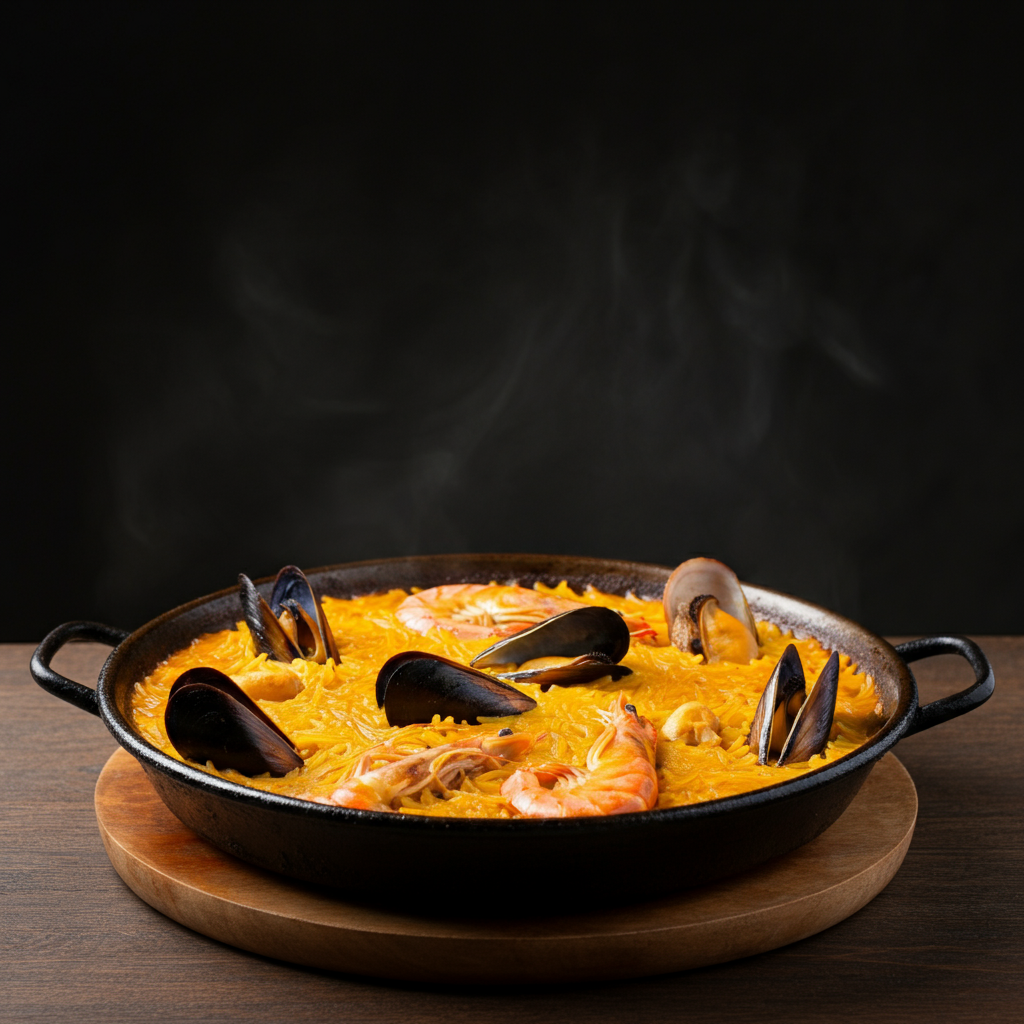Fideuà
Andorra
A paella-like dish using thin noodles instead of rice, common in coastal regions and also present in Andorra.

Origins and History
Fideuà, while strongly associated with the coastal regions of Spain, particularly Valencia, also holds a place in Andorran cuisine. Its presence in Andorra likely stems from historical and cultural exchanges with neighboring Catalonia and the broader Mediterranean region. The precise origins of fideuà in Andorra aren't extensively documented, but its adoption reflects the country's historical connections and the popularity of this noodle-based paella across the Iberian Peninsula. The thin noodles, the key ingredient, allow for a quick and easy cooking time, a practical attribute that likely contributed to its adoption in Andorra's mountainous terrain where access to certain ingredients might be limited.
Cultural Significance
In Andorra, fideuà isn't necessarily a dish with the same deeply ingrained cultural significance as it might have in coastal Spanish areas. However, it represents a connection to the larger Mediterranean culinary tradition and often features in social gatherings and celebrations. While not a dish specifically tied to a particular Andorran festival or event, its presence on restaurant menus and in home kitchens speaks to its acceptance and integration within the country's diverse gastronomic landscape. It's a reflection of Andorra's openness to culinary influences from its surroundings.
Traditional Preparation
Traditional Andorran fideuà preparation largely mirrors the techniques used in neighboring regions. It typically begins with a sofrito of onions, garlic, and tomatoes, forming the base for the flavorful broth. Various seafood – such as mussels, clams, prawns, and fish – are added along with the thin noodles (fideus). The broth is usually seasoned with saffron for color and aroma, along with herbs like rosemary or thyme. The dish is then cooked until the noodles are al dente and the broth has thickened slightly, creating a rich and savory experience. The final dish is often garnished with fresh parsley and lemon wedges.
Regional Variations
Given Andorra's relatively small size and proximity to other regions, significant regional variations in fideuà are less pronounced than in larger countries. However, subtle differences might exist depending on the specific ingredients available locally. Some families or restaurants may incorporate local mushrooms or mountain herbs into the sofrito, adding a unique Andorran twist. The type of seafood used could also vary slightly depending on seasonal availability and individual preferences.
Modern Interpretations
Modern Andorran restaurants might offer contemporary interpretations of fideuà, experimenting with different types of noodles, incorporating non-traditional ingredients, or adding a fusion element. This could include vegetarian versions with vegetables instead of seafood, or the inclusion of local meats like rabbit or pork. The introduction of spices from other cuisines is another area where modern interpretations might diverge from the traditional approach, always maintaining the essence of the dish while embracing modern culinary creativity.